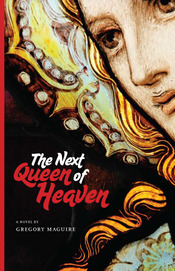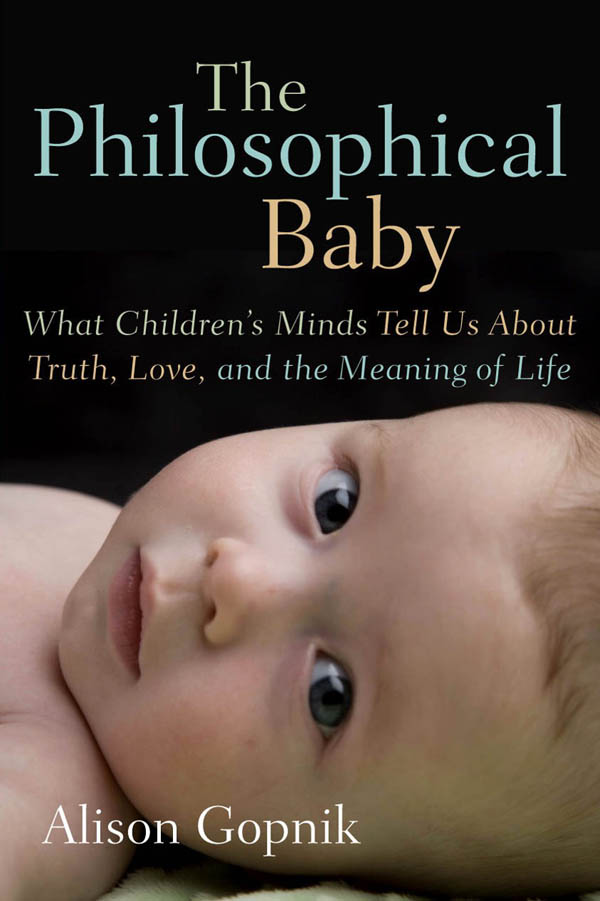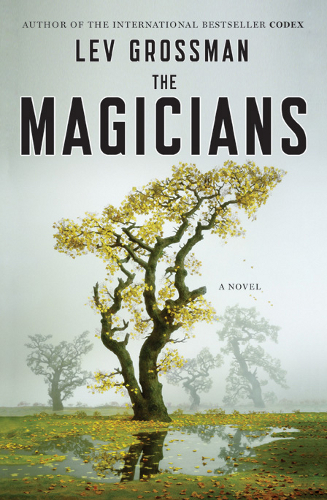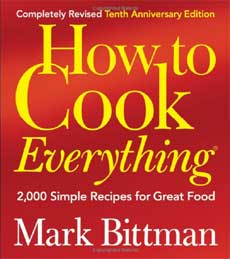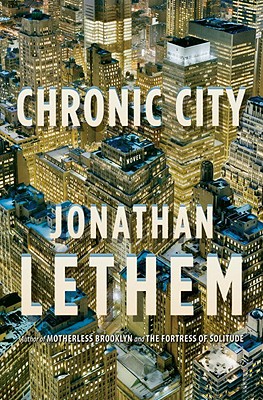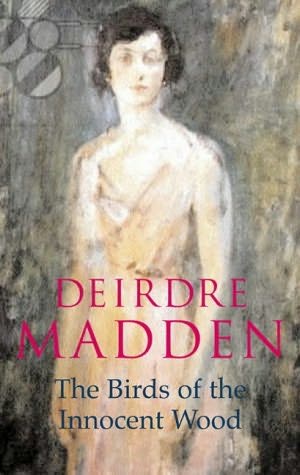Classes have started up again and with them lots of assigned reading. In addition I have been reading three books simultaneously and had three false starts, so I haven't managed to complete anything new this week. On the false start front, I gave up on
The Philosophical Baby by Alison Gopnik after a brief try. It's claims were too absurdly broad for it to be a serious work about science, even if it is written for a popular audience. General readers deserve well supported and well reasoned arguments too. It might have gotten better if I had waited it out, but I didn't have the patience. I also thought I might re-read Herman Hesse's
The Glass Bead Game, a book I really love, but found that I was not in the mood for it. Lastly, I got a copy of Margaret Drabble's novel
The Realms of Gold from the library, but someone had highlighted words they did not understand. Write in your own book, ok. Some can't stand that practice but I consider it a form of dialogue. But writing in a library book is defacing public property. It really angered me and I couldn't enjoy the book as a physical object, and as that is part of the pleasure of the reading experience for me I will have to get another copy. That leaves my ornery self with what I did manage to read this week:

I continue to wend my way through Gyorgy Buzsaki's
Rhythms of the Brain. It is a carefully reasoned, highly technical thesis about the role of oscillations in the workings of the brain. He has been building his case via an examination of the different tools neuroscience has of observing the brain, what they measure, and, as a result, what kinds of rhythms we will see. Then he gives an overview of the types of oscillations seen in nature; the ways we might characterize the rhythmic behavior of individual neurons as well as large groups of them; and his observation that the brain is in a state in which it generates lots of independent rhythms from internal sources. The relationships among these rhythms appears chaotic but can be described mathematically and furthermore, they exist in a mathematical relationship seen throughout nature. This might be thought of as semi-organized chaos. These states alternate with more organized rhythms which, when there is enough energy built up or when there is input from outside, coordinate the activity of the groups into regular patterns for brief periods of time. The brain, it seems, teeters on the edge of this organization, but lives just outside it, disposing it toward being able to carry out coordinated actions when required, but not live in a state of constant activity. This is important as the variety of patterns of coordinated activity are the alphabet of the brain's language. Neurons communicate in bursts of these. Just as the computer has a binary language (represented of 1s and 0s what we'll call for simplicity's sake "on" and "off" states) and the human mouth has periods of sending air through the vocal cords while making various shapes with our mouths alternated with periods of silences, the brain's language must be capable of making on-off contrasts in order to communicate. Anyhoo, I find stuff like this fascinating, but a book like Buzsaki's isn't merely conceptual, it asks the reader to be well acquainted with neuronal physiology and the measures of neuroscience to reap the rewards of his carefully structured case. Even with a few years of neuroscience under my belt, I have to read it slowly, so it will be a while before I finish it, but I am finding it worth the work.
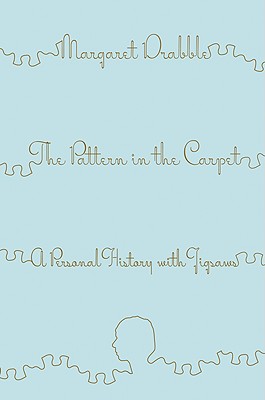
I am alternating the worthwhile exercise of Buzsaki with a less aerobic, indeed completely contemplative, read - Margaret Drabble's
The Pattern in the Carpet. As I said about this book when I first started it a few months back, this is a thinly veiled memoir (Drabble protests that she doesn't care for writing that is directly revelatory of self or family members) of her beloved Auntie Phyl, her own life-long relationship with writing and with depression, and the solace she finds in doing jigsaw puzzles, combined with a history of puzzles, board games, and other pastimes.
The human capacity for fear of boredom must have an evolutionary significance. Animals in nature do not seem to get bored, even when (like gorged lions) they have plenty of time for boredom. Domestic animals have caught the habit from us, and caged animals clearly and visibly suffer from it. So do horses in small wet fields. It has been experimentally demonstrated that laboratory rats, given stimulating activities such as a treadmill, retain their joie de vivre much longer than those deprived of these entertainments, and also retain a capacity for neurogenesis. Jigsaws and treadmills renew the brain cells. Activity is good for you, lethargy is bad for you. So the human intolerance of very long periods of lethargy is in itself an evolutionary stimulus towards invention, creativity, discovery. Playing games to pass the time is connected with intellectual development, just as funerary rites are connected with an apprehension of mortality.
While not exactly a hard scientific look at her claim, Drabble's exploration of the value of pastimes in light of her own malaise is a sort of behavior-level literary analogue of Buzsaki's discussion of alternating rhythms among neurons. Just as bursts of oscillations are the result of an accumulation of energy while in a disorganized state, so too is creative human activity born of the quiet that surrounds it. (I love relating ideas across the books I am reading). At any rate, Drabble offers us a quietly enjoyable collection of bits and bobs: mentions of the jigsaw puzzle in literature from Wordsworth to Austen, where she likes to get pizza near the British Museum, the London taxi driver who broadened her thinking about jigsaws, and details of her writing process (something I particularly enjoy) and why a writer like Drabble would be drawn to a pastime such as puzzles.
One of the reasons why the jigsaw appeals to me... is that it is pre-made, its limits finite, its frame fixed. No ordinary degree of manual clumsiness (and mine is advanced, and inevitably advancing) can yet prevent me from finishing a jigsaw. It can't be done badly. Slowly, but not badly. All one needs is patience. (The French used to call puzzles les jeux de patience, and the Germans called them Geduldspielen. Now they both call them puzzles.) In this aspect, the jigsaw in the very opposite of the novel. The novel is formless and frameless. It has no blueprint, no pattern, no edges. At the end of a day's work on a novel, you may feel that you have achieved something worse than a lack of progress. You may have ruined what went before. You may have sunk into banality or incoherence. You may have betrayed or maligned others. You may have to scrap not only the day's work, but the work of hte preceding week, month, year, lifetime. You may have lost ground, and for ever. You may have lost your nerve, and indicted all that you have achieved. Writing fiction is frightening. Some novelists find the safety of a reliable formula, but I never did, nor did I really wish to.
But she did find puzzles, and so the connection that brings us this original memoir cum history. The experience of reading
The Pattern in the Carpet evokes that quiet, rainy afternoon with time spread out before you feeling. None of the information contained in it is, shall we say,
necessary to me. I am not writing a paper on Margaret Drabble, nor am I fiendishly interested in puzzles. Drabble's integration of her topics is not even particularly graceful, but journeying with her as she places side by side these two stories and methodically searches for her way to make of their intersection satisfying literature, is proving a quietly enjoyable pastime of its own.

I cannot manage a week's reading without fiction, so finally the novel in the group - Joseph Kertes's
Gratitude. This is an epic novel set during the Nazi occupation of Budapest that came out last year. I am drawn to the subject matter as well as the setting. The book jacket is studded with glib hyperbole by best-selling fiction writers. I have barely started the book and already its set-up is cliched and made for the movies. I am hoping as I get into it, that either the story or the writing (dare I hope for both) will grab me by the neck and that something original to this author will emerge to make me read on. Now it's off to some school reading about the relational-self and diagnosing learning disorders.
 I continue to wend my way through Gyorgy Buzsaki's Rhythms of the Brain. It is a carefully reasoned, highly technical thesis about the role of oscillations in the workings of the brain. He has been building his case via an examination of the different tools neuroscience has of observing the brain, what they measure, and, as a result, what kinds of rhythms we will see. Then he gives an overview of the types of oscillations seen in nature; the ways we might characterize the rhythmic behavior of individual neurons as well as large groups of them; and his observation that the brain is in a state in which it generates lots of independent rhythms from internal sources. The relationships among these rhythms appears chaotic but can be described mathematically and furthermore, they exist in a mathematical relationship seen throughout nature. This might be thought of as semi-organized chaos. These states alternate with more organized rhythms which, when there is enough energy built up or when there is input from outside, coordinate the activity of the groups into regular patterns for brief periods of time. The brain, it seems, teeters on the edge of this organization, but lives just outside it, disposing it toward being able to carry out coordinated actions when required, but not live in a state of constant activity. This is important as the variety of patterns of coordinated activity are the alphabet of the brain's language. Neurons communicate in bursts of these. Just as the computer has a binary language (represented of 1s and 0s what we'll call for simplicity's sake "on" and "off" states) and the human mouth has periods of sending air through the vocal cords while making various shapes with our mouths alternated with periods of silences, the brain's language must be capable of making on-off contrasts in order to communicate. Anyhoo, I find stuff like this fascinating, but a book like Buzsaki's isn't merely conceptual, it asks the reader to be well acquainted with neuronal physiology and the measures of neuroscience to reap the rewards of his carefully structured case. Even with a few years of neuroscience under my belt, I have to read it slowly, so it will be a while before I finish it, but I am finding it worth the work.
I continue to wend my way through Gyorgy Buzsaki's Rhythms of the Brain. It is a carefully reasoned, highly technical thesis about the role of oscillations in the workings of the brain. He has been building his case via an examination of the different tools neuroscience has of observing the brain, what they measure, and, as a result, what kinds of rhythms we will see. Then he gives an overview of the types of oscillations seen in nature; the ways we might characterize the rhythmic behavior of individual neurons as well as large groups of them; and his observation that the brain is in a state in which it generates lots of independent rhythms from internal sources. The relationships among these rhythms appears chaotic but can be described mathematically and furthermore, they exist in a mathematical relationship seen throughout nature. This might be thought of as semi-organized chaos. These states alternate with more organized rhythms which, when there is enough energy built up or when there is input from outside, coordinate the activity of the groups into regular patterns for brief periods of time. The brain, it seems, teeters on the edge of this organization, but lives just outside it, disposing it toward being able to carry out coordinated actions when required, but not live in a state of constant activity. This is important as the variety of patterns of coordinated activity are the alphabet of the brain's language. Neurons communicate in bursts of these. Just as the computer has a binary language (represented of 1s and 0s what we'll call for simplicity's sake "on" and "off" states) and the human mouth has periods of sending air through the vocal cords while making various shapes with our mouths alternated with periods of silences, the brain's language must be capable of making on-off contrasts in order to communicate. Anyhoo, I find stuff like this fascinating, but a book like Buzsaki's isn't merely conceptual, it asks the reader to be well acquainted with neuronal physiology and the measures of neuroscience to reap the rewards of his carefully structured case. Even with a few years of neuroscience under my belt, I have to read it slowly, so it will be a while before I finish it, but I am finding it worth the work. I am alternating the worthwhile exercise of Buzsaki with a less aerobic, indeed completely contemplative, read - Margaret Drabble's The Pattern in the Carpet. As I said about this book when I first started it a few months back, this is a thinly veiled memoir (Drabble protests that she doesn't care for writing that is directly revelatory of self or family members) of her beloved Auntie Phyl, her own life-long relationship with writing and with depression, and the solace she finds in doing jigsaw puzzles, combined with a history of puzzles, board games, and other pastimes.
I am alternating the worthwhile exercise of Buzsaki with a less aerobic, indeed completely contemplative, read - Margaret Drabble's The Pattern in the Carpet. As I said about this book when I first started it a few months back, this is a thinly veiled memoir (Drabble protests that she doesn't care for writing that is directly revelatory of self or family members) of her beloved Auntie Phyl, her own life-long relationship with writing and with depression, and the solace she finds in doing jigsaw puzzles, combined with a history of puzzles, board games, and other pastimes. I cannot manage a week's reading without fiction, so finally the novel in the group - Joseph Kertes's Gratitude. This is an epic novel set during the Nazi occupation of Budapest that came out last year. I am drawn to the subject matter as well as the setting. The book jacket is studded with glib hyperbole by best-selling fiction writers. I have barely started the book and already its set-up is cliched and made for the movies. I am hoping as I get into it, that either the story or the writing (dare I hope for both) will grab me by the neck and that something original to this author will emerge to make me read on. Now it's off to some school reading about the relational-self and diagnosing learning disorders.
I cannot manage a week's reading without fiction, so finally the novel in the group - Joseph Kertes's Gratitude. This is an epic novel set during the Nazi occupation of Budapest that came out last year. I am drawn to the subject matter as well as the setting. The book jacket is studded with glib hyperbole by best-selling fiction writers. I have barely started the book and already its set-up is cliched and made for the movies. I am hoping as I get into it, that either the story or the writing (dare I hope for both) will grab me by the neck and that something original to this author will emerge to make me read on. Now it's off to some school reading about the relational-self and diagnosing learning disorders.


